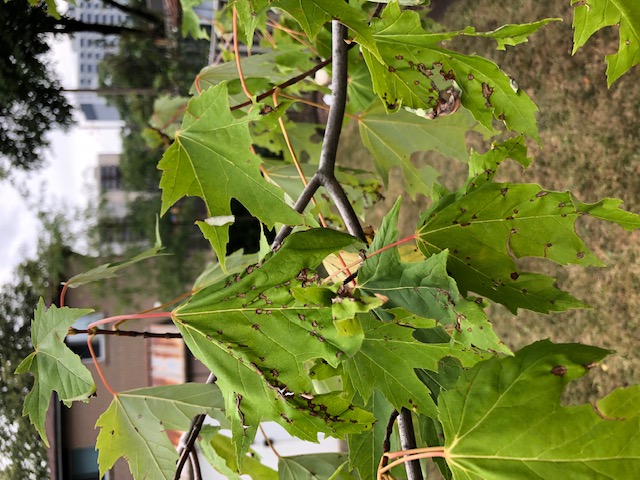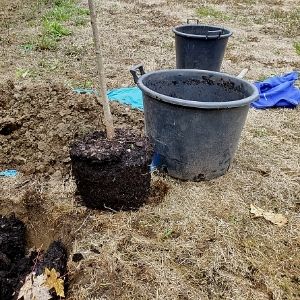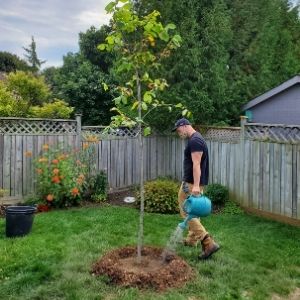A tree’s journey from the nursery to your backyard can be a stressful one. During this time, root damage and changing environmental conditions are the two main sources of stress - or shock - for a tree. Some root damage is inevitable when a tree’s roots are cut down to fit into a container for transportation. As a result, newly planted trees must depend on a smaller root system to supply their water and nutrients than what they are used to. The stress created by this supply and demand imbalance can be heightened by possible incompatible conditions that await a tree in its new home, such as infertile soil, limited space and changes in climate.

After planting, a tree can communicate transplant shock in a number of ways including wilting or falling leaves, premature fall colour, dying branches and, in serious cases, death. Transplant shock can also make a newly planted tree more susceptible to pests and diseases.
It is important to understand that transplant shock is normal to a degree. However, you can take steps before and after planting to minimize its impact and help your tree recover and establish quicker.

Before planting
- Find the right tree for the right place - Tree species have unique soil, sunlight and spacing needs, so when you plant a tree that matches your property’s conditions, you can reduce stress in the short and long term. A certified arborist can help assess your property and recommend a suitable tree species.
- Pick a native tree - Native trees have evolved to local climate conditions and soils, which give them a distinct advantage in adapting and recovering after transplant.
- Plant your tree at the right time of year - Spring and fall are the best seasons for planting your tree because the weather is cooler and more water is available underground. Hot and dry summer weather may intensify stress to a newly planted tree.

After planting
- Water regularly - Water is a critical tool in the fight against transplant shock as newly planted trees may struggle to meet their water needs with fewer roots. Water trees twice weekly using approximately six gallons of water each time. This is the equivalent of using 3 full watering cans twice per week, or using a hose with no nozzle on a very slow trickle for approximately 15 minutes, twice per week.
- Apply mulch - Natural mulch, such as woodchips, helps retain soil moisture, protects damaged roots against extreme temperatures and improves soil quality as it decomposes over time. Spread mulch two to four inches thick in a “doughnut” shape around the base of your tree.
- Don’t prune right away - During the first few years after planting, a tree is focused on growing and establishing its root system underground. Pruning your tree during this time can add stress, so only prune dead, diseased or broken branches.
Jess Wilkin is the Residential Planting Programs Operations Coordinator. She holds a Master’s of Forest Conservation from the University of Toronto.
LEAF offers a subsidized Backyard Tree Planting Program for private property. The program is supported by the City of Toronto, the Regional Municipality of York, the City of Markham, the Town of Newmarket, the Regional Municipality of Durham, the Town of Ajax, the City of Oshawa, the City of Pickering, the Township of Scugog, the Town of Whitby, Ontario Power Generation, Ontario Trillium Foundation and GrandTrees/Canadian Trees For Life.
